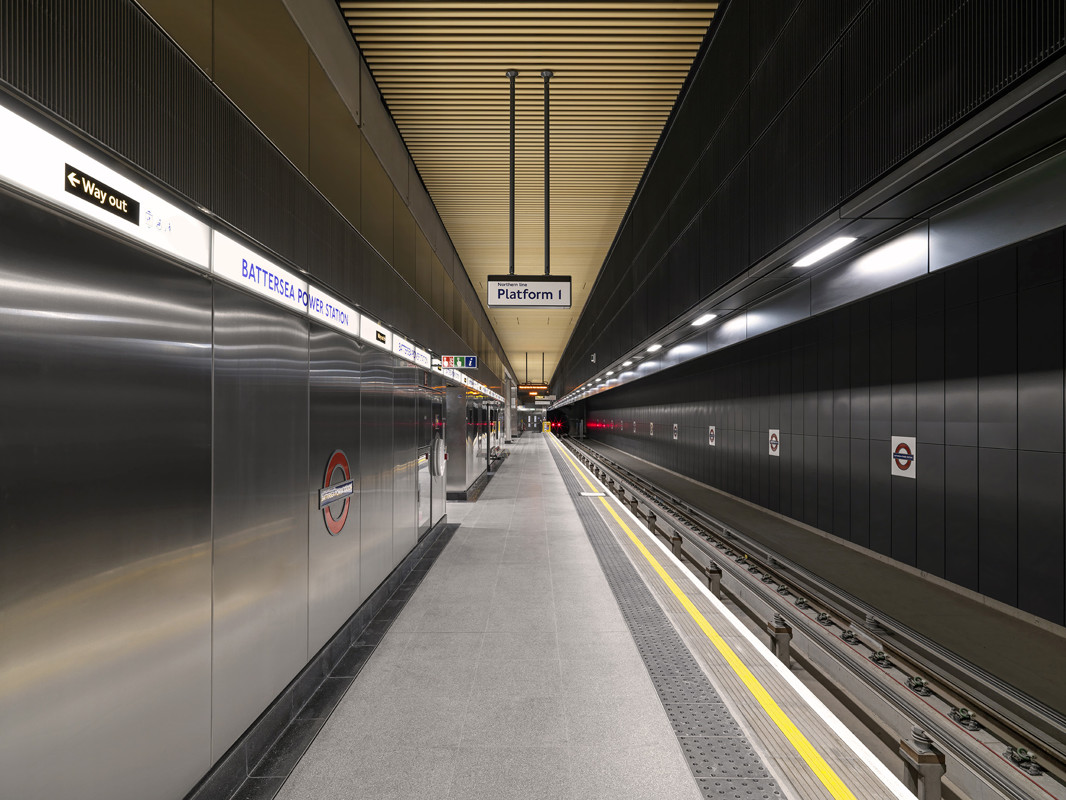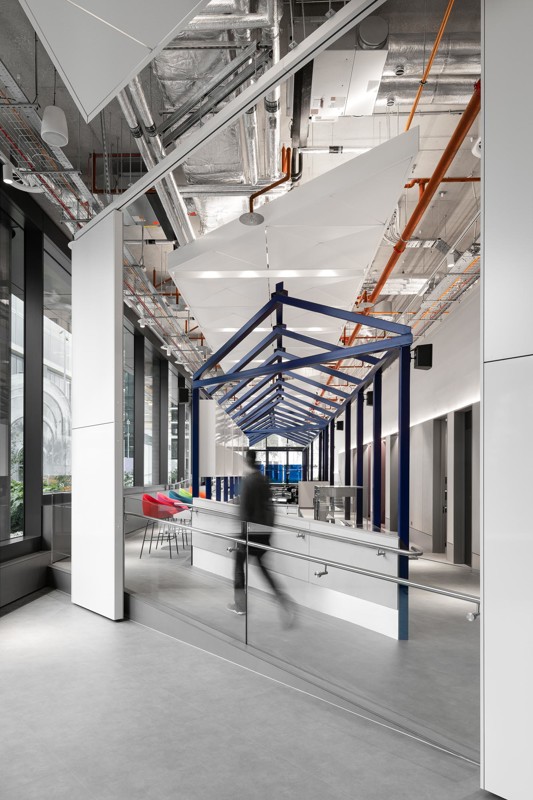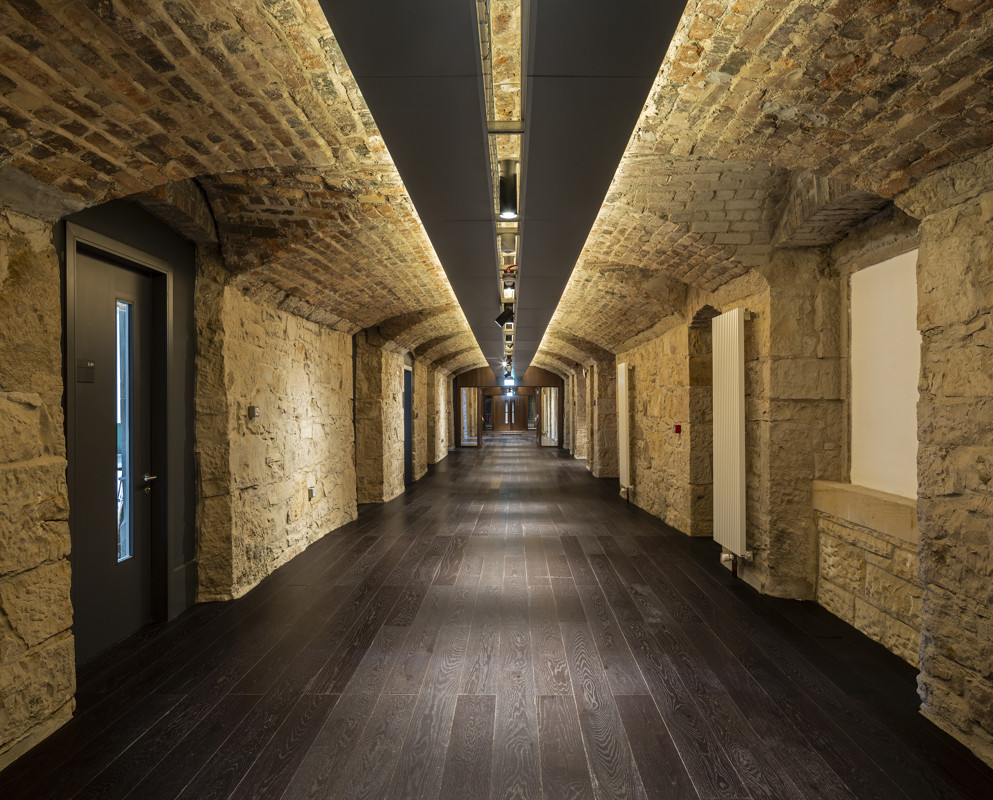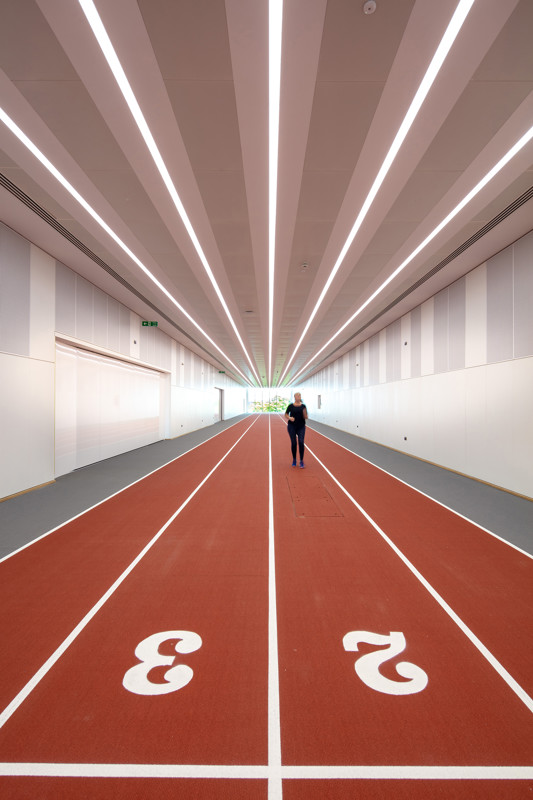The Science of Sound - What We Really Mean By Acoustic
As a manufacturer of products that keep commercial spaces calm and quiet, we talk a lot about acoustics - after all, this is the word used in the science world for everything sound related. It’s a broad one though, and we appreciate that it can encompass a lot of elements that may feel beyond the reach of those not involved in the business of controlling sound. Therefore, in this article, we’ll be looking at the basics of acoustics, to give you an idea of what we’re talking about when it comes to all things audible.
What does acoustic mean?
Acoustics refers to the arm of physics that supports the science of sound; this includes the way it’s made, the way it’s controlled, the way it moves, and the effects it can have on the matter around it. How mechanical waves propagate within states of matter, which are solids, liquids and gases, are the focus of acoustics, with wave propagation split into sounds and vibrations (audio), infrasound and ultrasound.
Acoustics touch many parts of the human and environmental experience, including earth sciences such as oceanography, life sciences such as medicine, engineering, and the arts. You’ll hear a lot of talk about acoustics in music, for example.
What is audio?
Audio is a noise or frequency range that can be heard by the human ear, which, for healthy humans with properly functioning ears, is approximately 20 Hz and 20 kHz.

What is infrasonic?
Infrasonic refers to the frequencies below 20 Hz, which is below the capability of a human’s hearing ability. You’ll often find references to infrasonic sound in earth sciences, as it forms a part of seismology which is the study of earthquakes.
What is ultrasonic?
Ultrasonic refers to the higher pitched frequencies, which are inaudible to human ears; these are 20 kHz and above. You may recognise the semantic link between ultrasonic and ultrasound; that’s because ultrasonic frequencies are often used in medical imaging, like the ultrasound scans used to detect babies in the womb.
Where does the word acoustic come from?
The word acoustic comes from the Greek word ‘akoustikos’, which means ‘of or for the hearing/ready to hear’.
How is sound measured?
Sound is measured in decibels, a unit shortened to dB. It’s a logarithmic unit (one that can express a physical or mathematical quantity), as well as a relative one, which is equal to one tenth of a bel (B). A decibel expresses the ratio of two power or root-power quantity values on a logarithmic scale. Therefore, one decibel (0.1 bel) is equal to 10 times the common logarithm of the power ratio.
The ‘bel’ is a nod to the inventor Alexander Graham Bell, who, as you may already know, is credited with creating the first ever telephone.
As humans, we don’t hear all frequencies equally, but sound level meters, which are the tools used to measure sound, are able to pick up on all detectable frequencies. Therefore, a sound level meter can give a ‘weighting’ to the decibel reading, which flattens out the frequencies and gives us a truer reading in relation to what we, as humans, can actually hear. The most common weightings are as follows:
A-weighting
This reflects what a healthy human ear can actually hear, and noise with this weighting is shown as dB(A).
C-weighting
This is usually applied to a sound measured at its peak sound pressure level, which is still audible by the human ear. It’s shown as dB(C).
Z-weighting
This indicates a flat frequency response between 10 Hz and 20kHz ±1.5dB, and, as you may have guessed, are shown as dB(Z).



How can we better understand what a decibel actually sounds like?
It’s hard to get your head around the measurement of sound unless you have some everyday context that demonstrates what a certain number of decibels actually sounds like. Let’s start with near total silence, which is, unsurprisingly, 0dB. This is followed by, for example:
- A whisper: 15dB
- A conversation: 50dB
- A bird call: 40dB
- Office noise: 60dB
- A lawn mower: 90dB
- Car horn from 1 metre: 110dB
- A thunderclap, pneumatic drill or a chain saw: 120dB
- A gunshot or jet engine: 140dB
The threshold of pain is set at 130dB, which means anything that registers at this level or above is going to hurt your ears and cause them damage, and exposure to anything in the range just below has the potential to damage your hearing over time.
What is sound reverberation?
A sound reverberation is when a sound persists after the source has ceased emitting it, due to reflections off the surfaces around it; this could be furniture, surfaces, people, even air. In short, sound waves can take a while to die out, depending on the surfaces they meet.
When there are lots of different sounds happening at once, and lots of reflective surfaces for sounds to bounce around on, it can be hard to focus on a single one. It’s why you might be able to hear someone speaking in a purpose built theatre from a hundred feet away, but may struggle to hear someone on the next desk in a busy office. Sound is best reflected by hard, non-porous surfaces such as glass, concrete and wood, whereas porous surfaces absorb it and stop these reflections in their tracks.

What’s the difference between a reverberation and an echo?
Believe it or not, echo is not another word for reverberation. To be considered a reverberation, a sound must return to the listener within 0.1 seconds; this is the threshold of time above which the listener would be able to discern the difference between the source of the sound, and the reflected sound. Reverberations happen when surfaces are within 17 metres of the listener.
When the reflective surface is at a distance greater than 17 metres from the listener, the sound returns to the listener after 0.1 seconds, and it becomes an echo. You can't therefore tell that the sound you originally heard and the reflection of it are not emitted from the same source.
What is sound absorption?
Sound absorption is a measure of how much sound the surface absorbs. The remaining sound that hasn’t been absorbed is reflected back into the space. In the absence of sound absorbing surfaces, a room will become noisy and reverberant, because the sound keeps ‘bouncing around’.
Poor sound absorption results in a number of undesirable effects; poor clarity of speech and excessive loudness is one of the most noticeable and troublesome, particularly if you need to be heard or concentrate. As more sound absorption is introduced to a space, the noise levels will reduce, because the sound waves are ‘decaying’ quicker.
Sound absorption is defined as a coefficient between 0 and 1, where the latter means that all sound is absorbed by the surface – thus none is returned to the room. The sound absorption of a surface is not the same for all types of sound. Porous materials are more efficient at absorbing mid and high pitched (or high frequency) sound than low frequency. Thankfully, we are normally less concerned about these low sounds because speech occupies the mid-high frequency range.
How is sound absorption measured?
The international standard BS EN ISO 11654:1997 defines sound absorption in varying degrees of detail. The Sound Absorption Coefficient (αs) and Practical Sound Absorption Coefficient (αp) both describe how sound is absorbed at different frequencies.
The Sound Absorption Rating (αw) simplifies this data further by expressing it as a single figure, obtained by comparison with a weighting curve. In addition, the standard defines Sound Absorption Class, which ranks the effectiveness of a surface from A to E, where A is the most sound absorbing.
Initial selection of a sound absorbing product can normally be based on the single figure αw or the Sound Absorption Class (A-E). Generally, it is only an acoustician that needs more detailed information.



How can sound absorption materials be installed into buildings?
Sound absorption materials can be made into soundproofing for rooms in the home, or, more commonly, in commercial spaces. For example, the sound absorption products we specialise in here at SAS, such as ceiling tiles, are crafted with open-cell porous material faced with a perforated metal sheet. The perforated metal offers no acoustic function and ideally is ‘transparent’ to the incident sound. This is achieved by forming a large number of holes of appropriately large diameter. Acoustic transparency is limited as the hole diameter approaches the thickness of the metal sheet. Within commercial spaces like offices, sound absorbing materials can be installed as partitions, ceilings, and wall coverings.
Similarly, perforation areas of less than 10% result in the higher frequency sound being reflected as it ‘sees’ too much metal and not enough hole. There is limited benefit in using perforation areas greater than 25%. Most ceiling tiles rely entirely on the porous material behind the perforated metal to absorb the sound.
Micro-perforated tiles are the exception and can offer sound absorption without a distinct porous backing. In both cases, sound is absorbed because the air particles have to vibrate within a medium that limits this movement. Porous absorbers are most effective when they coincide with air that is vibrating a lot. However, the vibration of air particles is not the same at every frequency or in every location within a room. As such, the effectiveness of a sound absorber is dependent on where it is placed.
What is sound insulation?
Sound insulation, sometimes referred to as sound attenuation, is the measure of how effectively sound is limited when passing through a building element. Glazing, partitioning and ceilings are important for sound insulation; basically, anything where the passage of sound from one space to another needs to be controlled.
Sound is still able to pass through solid elements like doors and partitions; This is because the vibrating air particles cause the solid element to also vibrate, though it’s on a very small scale. The vibrating element then causes the air particles on the opposite side to vibrate, which is then perceived as sound.
It can be intuitively understood that heavier elements will offer more sound insulation because they are more difficult to move (Newton’s second law of motion). In fact there are well established relationships between mass/area and sound insulation. Sound energy is dissipated as it moves from one medium to another. For this reason, multi-layered constructions are efficient at providing sound insulation even if they are lightweight.
Two definitions of sound insulation are used depending on the product and its installation; Single Pass and Double Pass.

What is single pass sound reduction?
The first of these definitions is sound reduction, which is a measure of how effectively sound is blocked by an element – a ‘single pass’. As with sound absorption, it is not the same for all types of sound and is normally worst at the low frequencies.
If the sound reduction performance is stated as a single figure it uses the R for reduction and a subscript ‘w’ which stands for ‘weighted’. As such, a Rw figure is a simplified indication of how much direct sound is stopped from getting through a building element. It is a term often used to describe glazing and partitions.
What is double pass sound reduction?
In addition to the direct ‘straight through’ definition, sound insulation is also quantified in terms of a ‘flanking’ route – the so-called ‘double pass’. Dⁿfw is the abbreviation used, and it means a sound level difference via a flanking route that is normalised and weighted. It supersedes Dⁿcw where the ‘c’ is an abbreviation for ceiling. Double pass basically defines how much sound is blocked by passing through the same element twice. For us at SAS, it’s a relevant metric for ceilings which span more than one room and have a common void.
Why choose SAS for acoustic commercial building interiors?
SAS stands for Special Acoustic Services, and that’s exactly what we provide; design and science led metal ceilings and bespoke architectural metalwork that can be seen in buildings worldwide. We work with business owners to not only find a ceiling solution that will create a calm and quiet space, such as those sought in offices, schools, libraries, train stations and more, but also one that matches the look they’re creating within their room.
In addition to ceilings, we can work with you on integrated lighting, partitioning and doors, and room comfort such as radiant heating.
Talk to us today about how we can use our expert understanding of acoustics to control the way sound travels around your commercial space.
